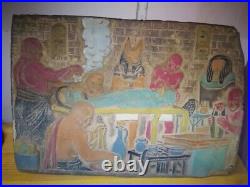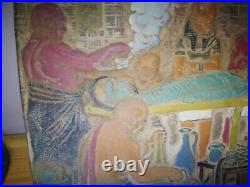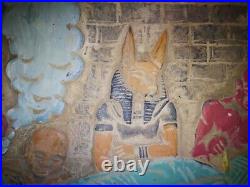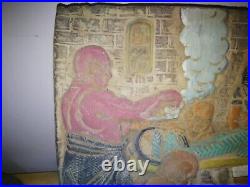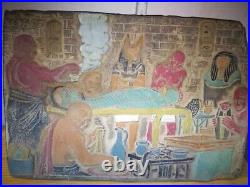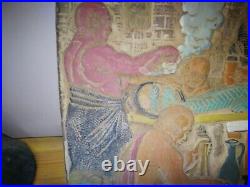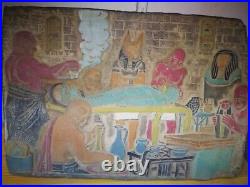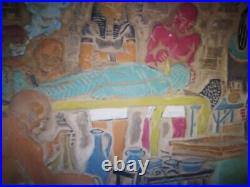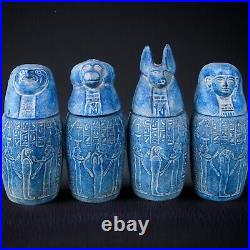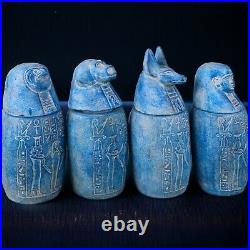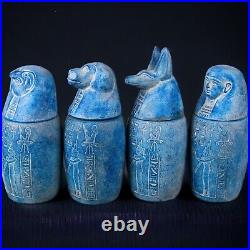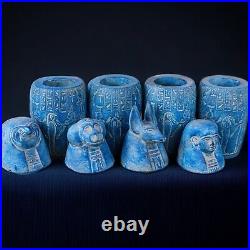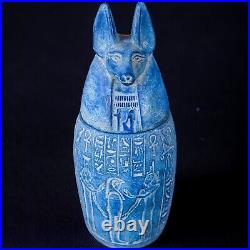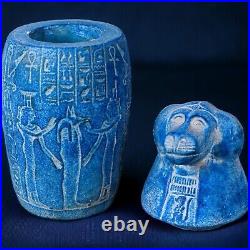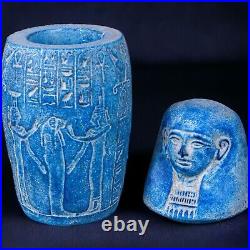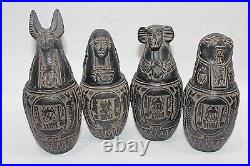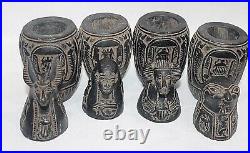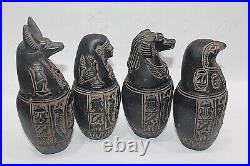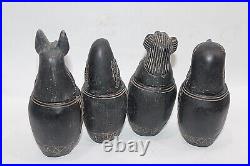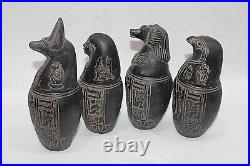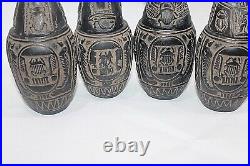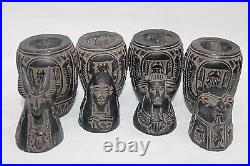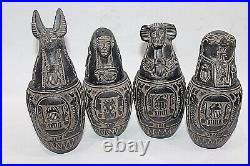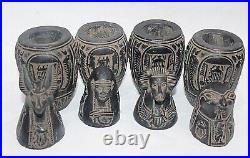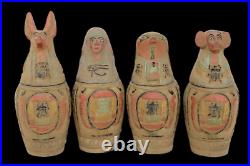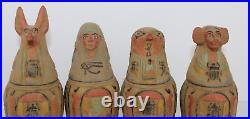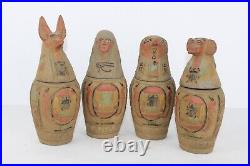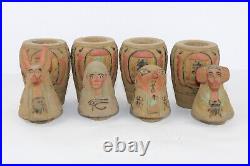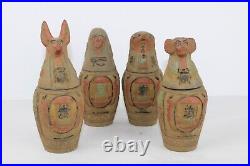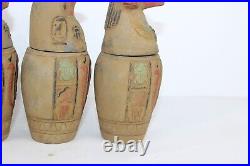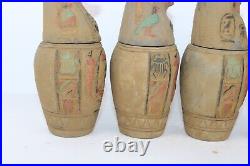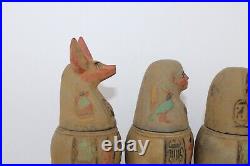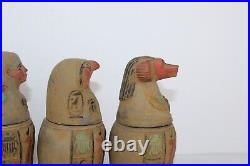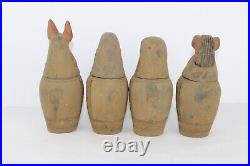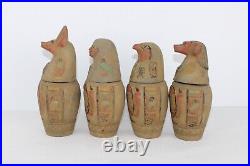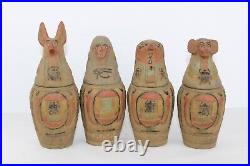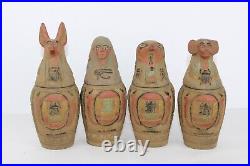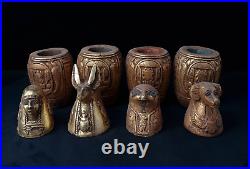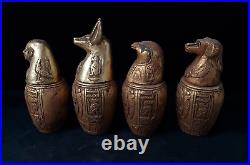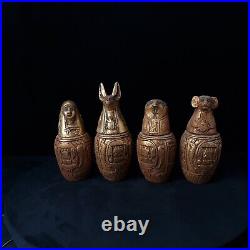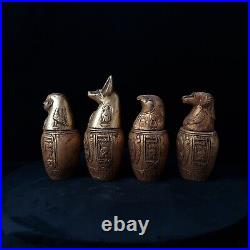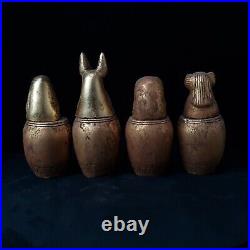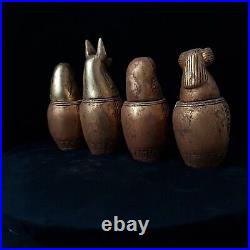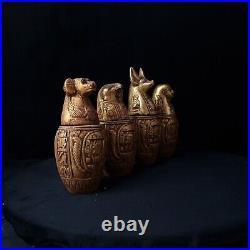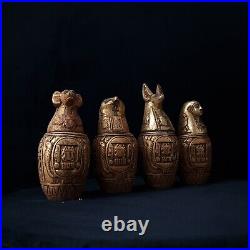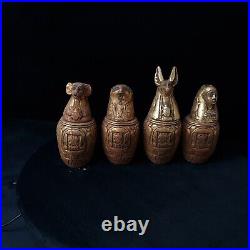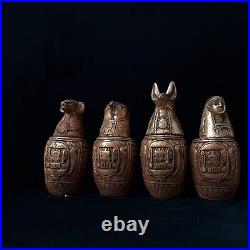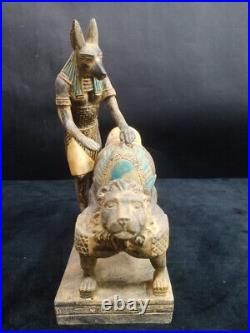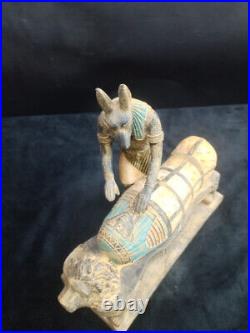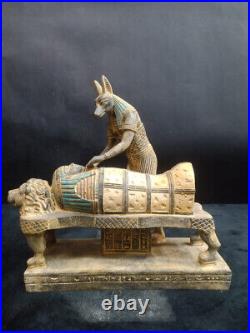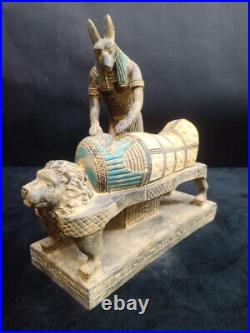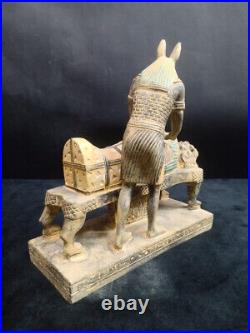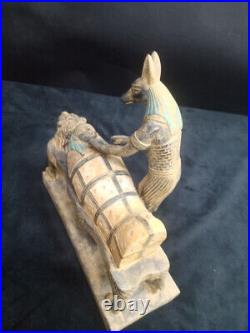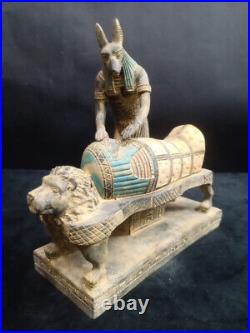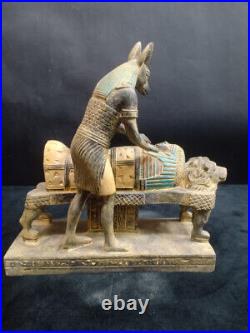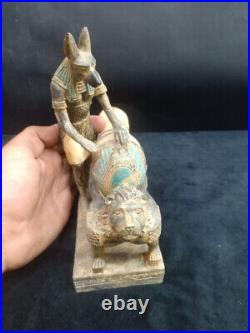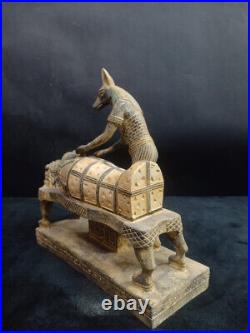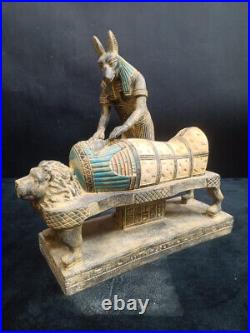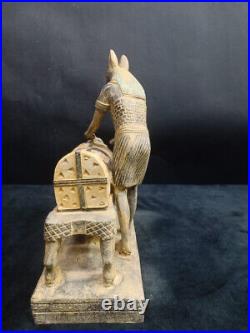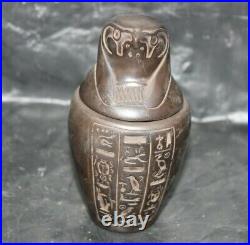
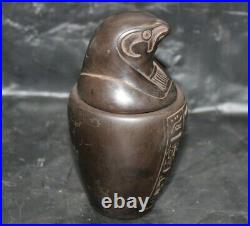

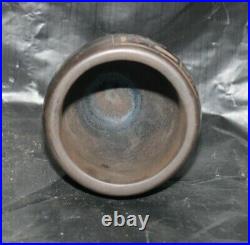

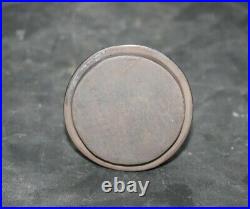
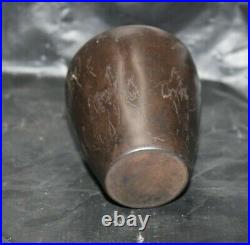
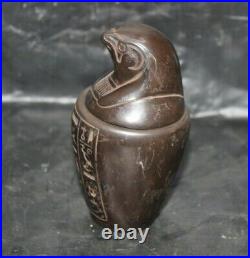
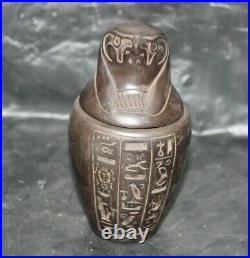

Unique Ancient Egyptian Horus Canopic Jar Used before mummification Process. Ancient Egyptian human remains have been of interest in the fields of both medical and Egyptological research for decades. However, canopic jar holders for internal organs (liver, lungs, stomach, intestines) of Egyptian mummies appear to be but a very occasional source of data for such investigations. The few medical approaches focusing on the content of these jars are summarized and listed according to pathogens and diseases to give a structured overview of this field of study. An extensive search of the literature has been conducted from different bibliographic databases with a total of n = 26 studies found. The majority of diseases found consisted of infectious diseases and internal medicine conditions such as schistosomiasis or emphysema. These are just 2 examples of many that, instead of primarily affecting bone, muscle or skin, specifically target internal organs. Hence, a better understanding of the evolution of diseases that still affect mankind could be gained. In conclusion, this reassessment shows that canopic jars represent a highly underestimated source for histological, radiological and ancient DNA examination of Ancient Egyptian remains and should, thus, be more and more brought back into the focus of retrospective medical research. Please view all photos along with reading this description. If there is anything I need to clarify, feel free to ask questions. I have other items for sale at the moment and shall be listing others over the following few days, so please keep checking my items for sale. Dear Buyers, The items Designed to be antique Style With Excellent Condition. Dear Customers, you will receive exactly the same item which you see on the pictures, not similar or other. This is a lovely item to own or to give as a special gift. I check myself each product and sell only the best quality products. In any case, if you are not satisfied with the product, first, please contact me and I will do everything to your satisfaction. In any case of problem contact me right away before leaving feedback so I will do my very best to resolve any problem, and to make you satisfied.



